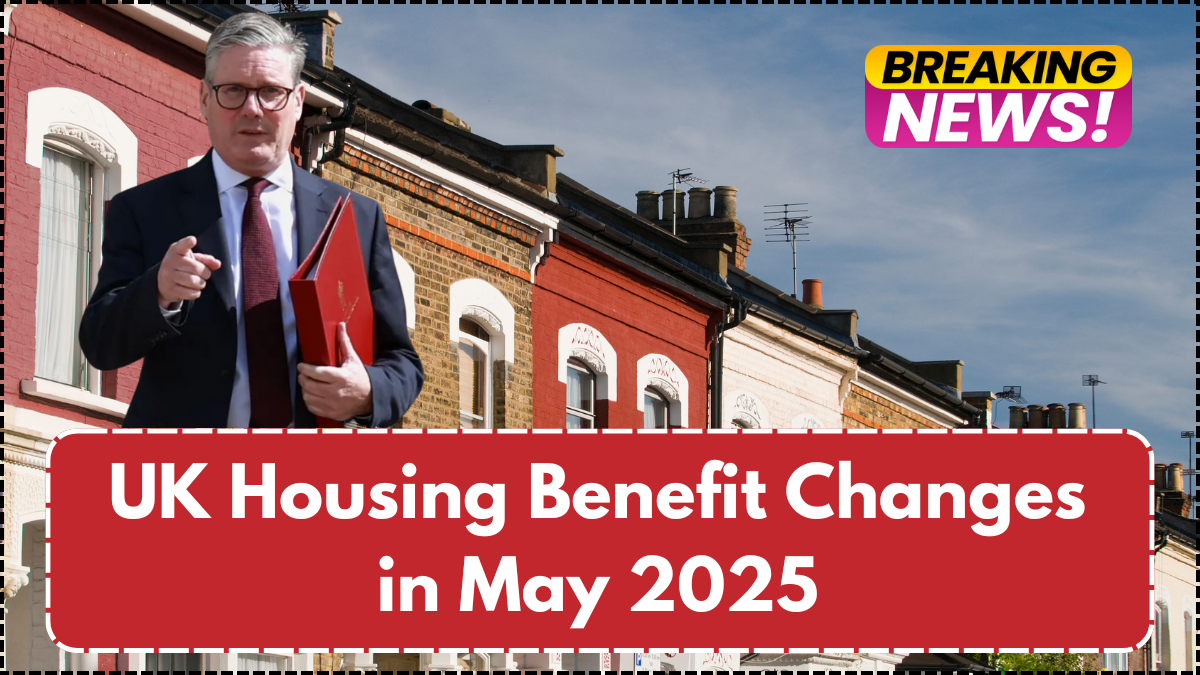As of May 2025, the UK government has fully rolled out significant changes to its Housing Benefit system. These reforms, which began implementation in April, are designed not just to cut costs but to bring the benefit structure in line with the country’s evolving economic climate. Rising housing prices, inflation, and stagnant wages have forced a reassessment of how support is calculated, who qualifies, and what is expected of claimants.
Under the new guidelines, working-age recipients face stricter obligations, benefit amounts are tailored more closely to local rent trends, and eligibility is being reassessed more rigorously. Understanding these updates is vital for both new applicants and existing beneficiaries.

Why These Housing Benefit Reforms Are Taking Place
The revised Housing Benefit framework addresses persistent problems in the UK economy: a widening affordability gap in housing, sluggish wage growth, and resource constraints. The updated system is not simply about saving public money. Instead, it encourages financial independence and targets support more efficiently.
Now, benefits are adjusted based on local rent markets, giving more to claimants in high-cost cities while scaling back in cheaper regions. This approach is intended to ensure fairness and improve how public funds are used. The broader strategy is to make welfare more responsive and aligned with real living conditions across the country.
Regional Differences in Housing Benefit Amounts
The new policy introduces tiered benefit levels based on rental market data:
| Region Type | Expected Payment Change | Explanation |
|---|---|---|
| High-Rent Areas | Moderate Increases | Reflects rising rent costs in cities like London |
| Low-Rent Areas | Potential Reductions | Payments capped to prevent over-subsidization |
| Social Housing | Minor Adjustments | Fixed rent structures limit the need for large changes |
These updates follow a more data-driven approach, where local authorities now use updated housing data to fine-tune payment levels.
Stricter Eligibility Rules Now Active
The eligibility rules were revised in April 2025 to focus support on those in genuine need. The changes include:
- Lower asset and income thresholds
- Universal Credit recipients undergo revised calculations
- Mandatory reassessment for all current claimants
Those with modest savings, secondary income streams, or multiple benefit claims may lose eligibility. These updates aim to ensure only the most financially vulnerable continue receiving support. It’s advisable to check your status through official channels or consult a benefits advisor to understand your position.
New Employment Requirements for Non-Pensioners
Claimants under pension age now face higher expectations around employment:
- Job-seeking or proof of increased hours is mandatory
- Vocational training or job centre participation may be required
- Pensioners, full-time carers, and medically exempt individuals remain unaffected
This shift pushes for a stronger link between receiving benefits and making active efforts toward employment, mirroring policies in other parts of the welfare system.
Local Rent-Based Benefit Calculations
Since April 2025, Housing Benefit is now more closely tied to real-time rental data. Key impacts:
- Urban areas with high rent may see increased benefit ceilings
- Cheaper regions may face stricter payment caps
- Social housing residents will experience minimal impact due to fixed-rate structures
This model reduces overpayments and ensures support aligns more closely with actual housing expenses, providing a more sustainable system.
What Renters and Landlords Need to Know
Private renters in high-rent areas may receive a slight boost in support, but others could face shortfalls. Communication between landlords and tenants is now more critical than ever. Landlords are encouraged to:
- Track benefit reassessments with tenants
- Discuss payment timelines in advance
- Prepare for any delays or gaps in rental income
Tenants may also need to consider relocating or seeking supplementary support to manage the gap.
Steps to Take Immediately
With these changes now in effect, claimants should act promptly:
- Use updated tools on gov.uk to reassess eligibility
- Gather financial documents such as payslips and savings details
- Book a session with a housing advisor or attend a DWP webinar
The Department for Work and Pensions has launched new digital toolkits, live Q&A events, and local support centers to help during this transition.
Future Outlook and What to Expect
These reforms mark a long-term shift in welfare strategy. The emphasis is now on:
- Encouraging financial independence
- Reducing dependency on state support
- Aligning benefits with actual cost-of-living dynamics
Over time, local councils and claimants alike may face more frequent reassessments. Long-term, the expectation is that benefit levels will continue to be reviewed in response to economic shifts.
FAQ
What should I do if I no longer qualify for Housing Benefit?
You can apply for Discretionary Housing Payments, seek local council assistance, or explore options for increasing work hours or relocating to a more affordable area.
Will pensioners be affected by these changes?
No, the employment conditions and most reassessment rules do not apply to pensioners.
How do I find out if my benefit amount has changed?
Use the updated online calculator on gov.uk or contact your local authority for a personalized assessment.
Can I appeal if my benefits are reduced?
Yes, you can request a mandatory reconsideration and, if necessary, proceed to a formal appeal with a tribunal.
What support is available to help with the transition?
The DWP offers webinars, local events, and toolkits to help claimants navigate the new system. Housing charities also provide support services.
Click here to know more.